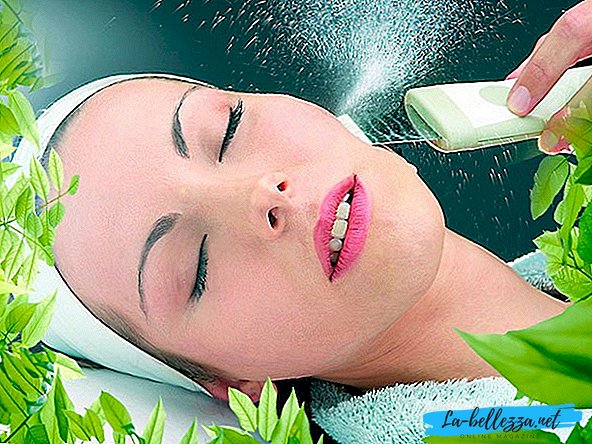
One of the inflammatory diseases of the kidneys - pyelonephritis - is a non-specific infectious disease.
According to statistics, over the past ten years, the number of cases of pyelonephritis in the overall morbidity structure has dropped ten times. But you should not relax, because inflammation of the kidneys in women, as before, is common and much more common than in men.
About 4 to 5 times women suffer from kidney inflammation more often than men. Even in children, kidney inflammation develops in 3% in girls and in 1% in boys. The causative agent for inflammation of the kidneys in women in 90% is E. Coli - E. coli. This is due to the anatomical structure of the genitourinary system in women.
Why does female kidney inflammation occur?
Ways of infection in women with kidney inflammation
The urethra in women is in close proximity to the anus and vagina. Unlike men, in women it is wide and short - up to two centimeters. Therefore, the causative agent of infection, regardless of its type, can easily penetrate the urethra and reach the kidneys through the ureters and bladder. This is an ascending pathway of infection. In addition to Escherichia coli, other pathogens of infection can also get into the kidneys in a similar way: staphylococci, Klebsiella, Proteus, enterococcus, pseudomonas, enterobacter, pathogenic fungi, viruses. These microbes belong to the conditionally pathogenic flora, which becomes dangerous in the presence of certain conditions. In 20% of women, kidney inflammation is caused by mixed flora.
Pathogenic bacteria or fungi enter the urethra and after each sexual intercourse, they, like a pump, are “pumped” into it. A high risk of kidney inflammation in women in the menopause. This is due to the dryness of the mucous membranes due to emerging hormonal disorders, which facilitates the introduction of a pathogenic factor into the body.
But there is also a downward path of infection. In such cases, microbes penetrate the kidneys through the blood, if any infection is already present in the body.
Inflammation of the kidneys in women in the presence of opportunistic flora does not always occur. E. Coli is constantly present in the body, but this does not mean that it necessarily leads to the disease. This occurs, as a rule, with reduced immunity and in the presence of certain factors.
Risk factors are: hypothermia, the presence of urolithiasis (ICD), ovarian cysts, diabetes mellitus, medical manipulations (catheterization, transvaginal or transrectal ultrasound examination), surgical interventions on the genitourinary system, woman's age (risk increases with age), kidney prolapse.
Clinical manifestations of kidney inflammation in women
Inflammation of the kidneys can be acute and chronic. Acute inflammation of the kidneys in women, if you do not start treatment on time, can become chronic. The chronic course of kidney inflammation in women is not necessarily a continuation of the acute. There are cases when the disease initially has signs of chronic.
The clinical picture of acute kidney inflammation is bright: It can begin with severe pain in the kidneys or only on one side, because the process is one-sided. It is accompanied by a high temperature - above 380 C, chills, headaches, nausea, sometimes vomiting, severe weakness, malaise, and lack of appetite. These are common signs of any inflammatory process in the body. In addition, frequent urination, mainly at night (nocturia), is of concern.
Pain in kidney inflammation in women can be girdle, mainly in the lower back, of a blunt diffuse nature - with bilateral inflammation of the kidneys. With a change in body position, the intensity of the pain does not change. With purulent pyelonephritis, the temperature curve can be spasmodic: several times a day increase to 390 C and decrease to subfebrile numbers. Fever can last a week, sometimes longer.
With a timely diagnosis and treatment started, improvement in the condition occurs in 95% of patients on the second day.
Chronic inflammation of the kidneys in women - features of the clinical picture
It is important to start treatment on time so that chronic illness does not occur. But chronic inflammation of the kidneys can be without a previous acute stage.
With chronic inflammation of the kidneys in women, the clinical picture is erased, there may be no specific complaints. Concerned about general weakness, lethargy, fatigue, malaise, coldness. There may be night trips to the toilet, slight swelling of the face, hands in the morning, low-grade fever (37.10 - 37.40 C) in the evenings for no apparent reason, lower back discomfort or aching pains on the one hand, aggravated by physical exertion. A slight increase in blood pressure may even appear, which was not previously noticed.
Chronic inflammation of the kidneys is detected during a detailed examination.
How to recognize kidney inflammation in women - diagnosis
Mandatory are general clinical tests of blood and urine, ultrasound of the kidneys, if necessary - excretory urography, x-ray examination with contrast, computed tomography, angiography of the arteries of the kidneys, radionuclide examination. Most often, the diagnosis of kidney inflammation is not particularly difficult, so recent studies are carried out in complex diagnostic cases.
In the analysis of urine and blood, there are signs of inflammation: in the blood - leukocytosis and increased ESR, in the urine - leukocytes, erythrocytes, in small quantities - protein, there may be bacteria, the urine reaction is alkaline (pH 6.2 - 6.9). Color changes (urine becomes dark) and transparency (urine is cloudy).
With bacteriological culture of urine, a specific pathogen and its sensitivity to a specific antibiotic are revealed. With inflammation of the kidneys in 1 ml of urine, the number of bacteria exceeds 105.
To study kidney function, it is necessary to pass a urine test according to Zimnitsky: every three hours, urine is collected in separate containers every day, the number of daily and night portions and density are determined. With inflammation of the kidneys, a decrease in the density of urine, the prevalence of nocturnal diuresis over daytime.
For the differential diagnosis of the inflammatory process, a urine analysis is collected according to Nechiporenko: a 1 ml daily urine count of leukocytes, erythrocytes, and cylinders is counted. With kidney inflammation, the number of leukocytes significantly exceeds the number of red blood cells.
Of the instrumental methods of research, obligatory is the sonography of the kidneys (ultrasound), which makes it possible to determine the presence of stones, cysts, abscesses, the size of the kidneys, and the density of their parenchyma. In acute inflammation of the kidneys, the echogenicity of the parenchyma decreases unevenly. In the chronic process, echogenicity is increased.
How to treat kidney inflammation in women
Treatment begins immediately after diagnosis. Antibacterial drugs are prescribed immediately, without waiting for the results of bacterial sowing and determining the sensitivity of the seeded flora to antibiotics, since the answer is possible on the fifth - sixth day. But by this time, the condition with the treatment started on time is improving, and quite often it is not necessary to change the antibiotic immediately prescribed. Only in the absence of effect is it necessary to replace the drug. Sometimes two antibiotics of different groups are prescribed simultaneously.
Fluoroquinolones, protected penicillins (aminopenicillins), cephalosporins, macrolides are used for kidney inflammation.
Currently, penicillin preparations (ampicillin, etc.) cannot be used categorically in treatment, since resistance develops in 40% of them, 5 - NOC, biseptol. Successfully used protected semi-synthetic penicillins (tazobactam, sulbactam (unazin), etc.).
Fluoroquinolones are prescribed empirically (sparfloxacin - “Sparflo” - is used for kidney inflammation in young women; levofloxacin - “Levolet” - is prescribed for kidney inflammation in older women. This is due to some ECG changes that may occur during treatment).
Macrolides (erythromycin, clarithromycin, roxithromycin, spiramycin) inhibit protein synthesis in a microbial cell, therefore, their purpose is effective for inflammation of the kidneys.
Cephalosporins can be prescribed in tablet form if a woman tolerates their intake (ciprofloxacin, cephalexin, zinnat) and does not bother with nausea and vomiting when taking the drug. If these side effects are expressed, the drug is administered parenterally (ceftriaxone, cefatoxime) twice a day. If the effect does not occur within three days, the antibiotic changes. In this case, it is necessary to conduct additional research methods to exclude complications (abscess, sepsis).
Antibiotic treatment is carried out for at least 10 days.
At the same time, to enhance the effect of treatment, uroantiseptics - nitrofurans are prescribed: furagin, furamag, monural. Monural is approved for use even in pregnant women, it is used once in a single dose.
Herbal anti-inflammatory drugs are used (kanefron, ciston, phytolysin). Kanefron has virtually no side effects, is completely safe, has antispasmodic, anti-inflammatory and analgesic effects.
Antihistamines are also used. (tavegil, clarithin, suprastin, etc.), diuretics if necessary (furosemide), antispasmodics (but - shpa, drotaverin), multivitamins, general strengthening, increasing immunity.
Additional renal fees apply in the form of tea, diet food (salt-free diet, protein restriction, more berries / viburnum /, fruit, a large amount of liquid - up to two liters of pure water (in the absence of contraindications), fresh juices). Categorically it is necessary to exclude alcoholic beverages, carbonated water of coffee with inflammation of the kidneys in women.
During treatment, it is advisable to stop sexual contact because of the risk of additional infection.
Need to remember, that treatment should be prescribed individually, depending on the severity of the disease, the course of the inflammatory process of the kidneys, the general condition of the woman, and concomitant diseases. With self-medication, disease progression, the occurrence of various serious complications can occur. Complications include abscess, sepsis, and renal failure. Although kidney inflammation in women is not initially a serious illness, its complications with inadequate treatment can be fatal. According to statistics, if after a diagnosis of pyelonephritis a woman does not change her lifestyle and does not begin treatment, her life expectancy does not exceed ten years. Sepsis, as the numbers show, becomes a fatal complication in every third person, of those from whom he arose.
Of the famous women who died from sepsis, which was a complication of kidney inflammation, was the famous Brazilian model Marianne Bridi Costa. In an attempt to stop the septic process, her arms and legs were amputated, but she could not be saved from death.
She suffered kidney inflammation complicated by sepsis, another famous woman - singer, winner of the Grammy Award, Etta James.
But, despite the sad statistics, with inflammation of the kidneys, a woman can live a full life, not limited by any time frame, if important conditions are met: prevention and timely treatment of kidney inflammation.











